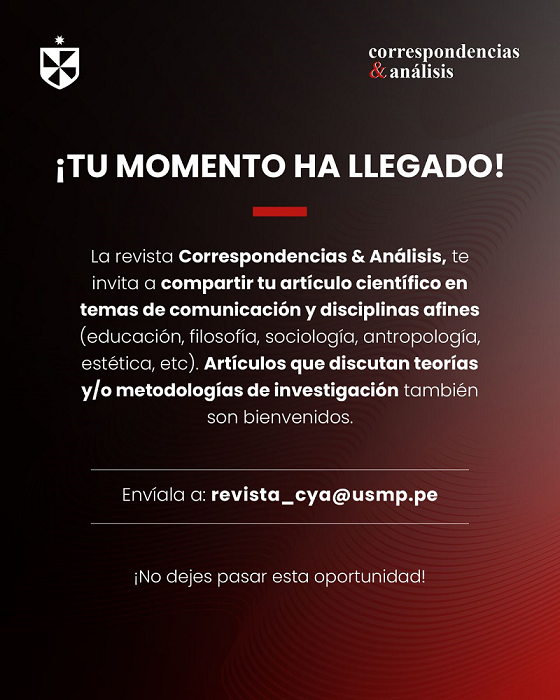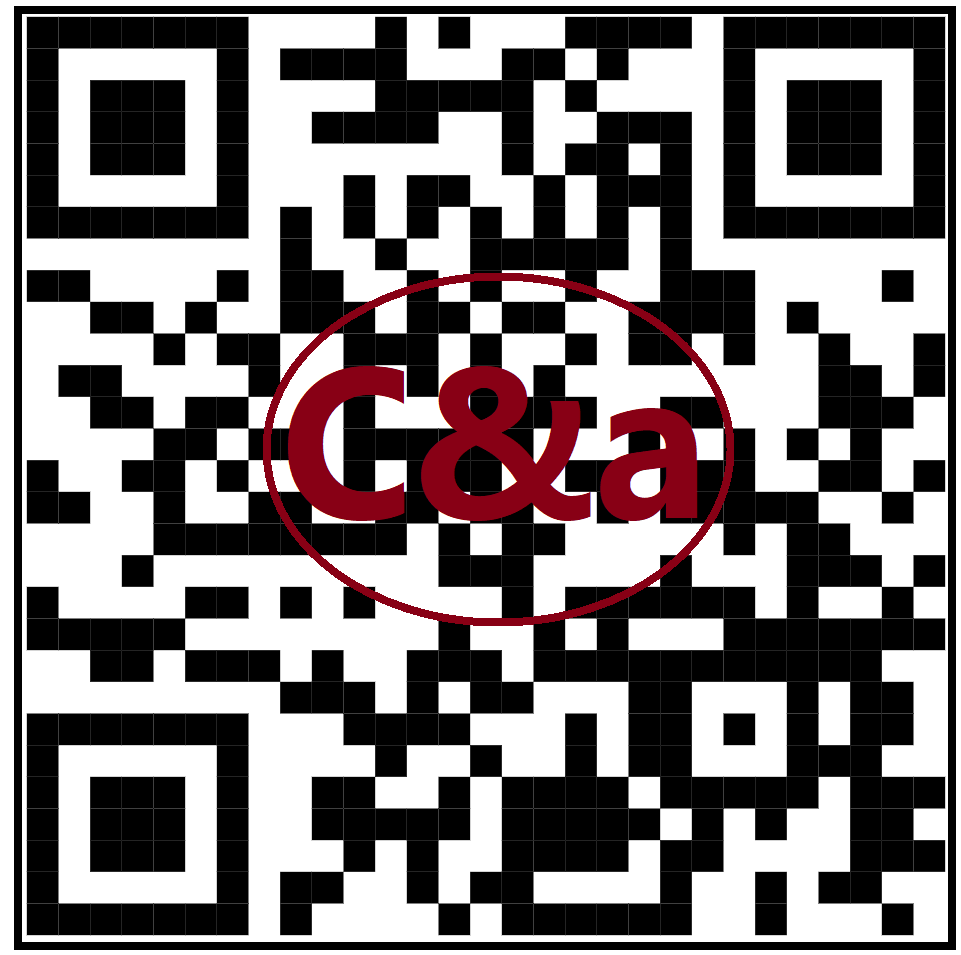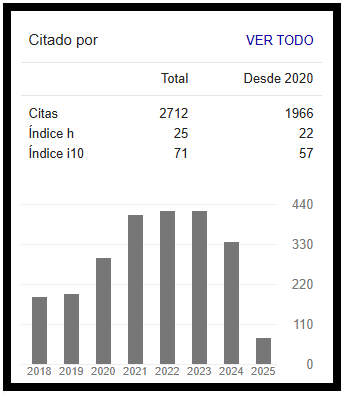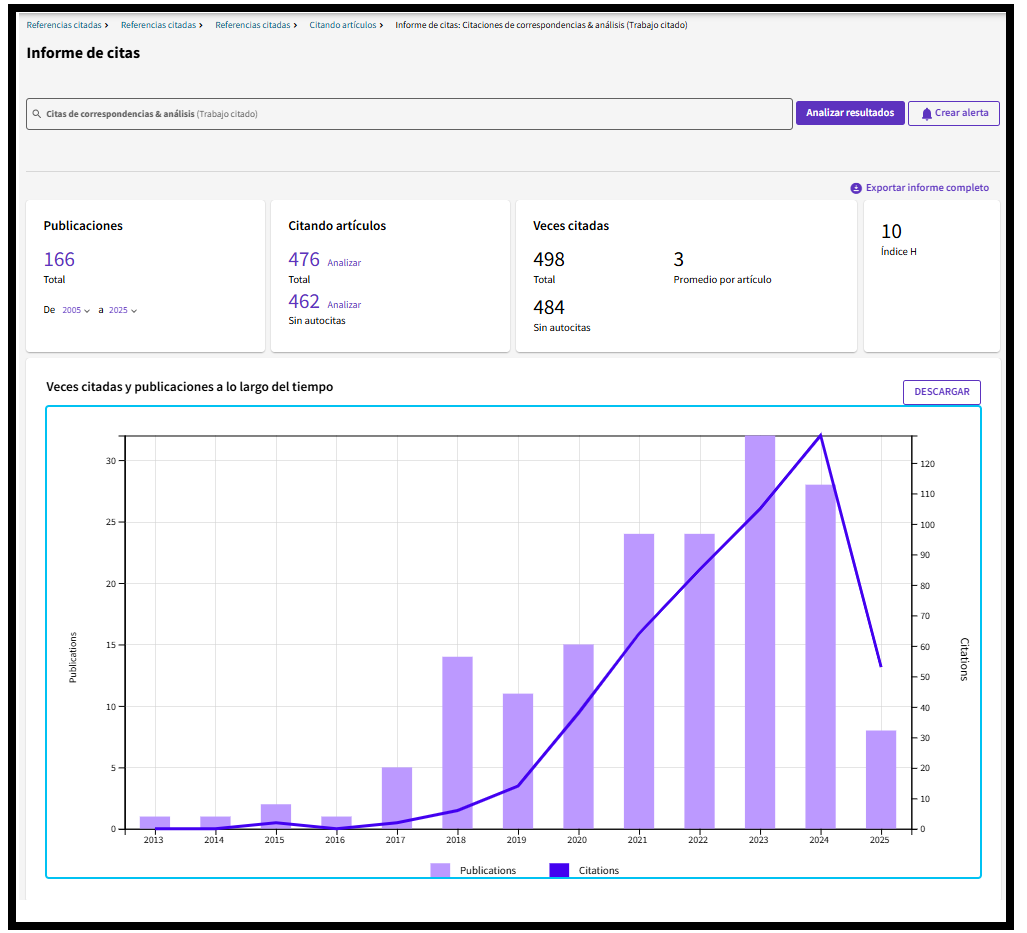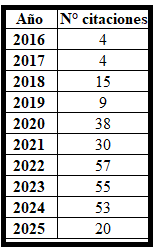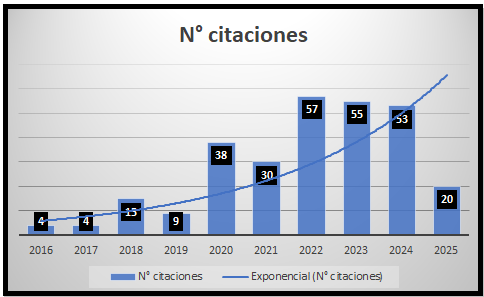The validity of the classical patterns of coverage of natural disasters in the Internet Age
DOI:
https://doi.org/10.24265/cian.2012.n2.03Keywords:
Natural Disasters, Spanish Press, Agenda-Setting, Google, Social MediaAbstract
This article presents the results of a comparative analysis of the Press coverage of natural disasters in the world by Spanish newspapers during the years 2009 and 2010 and some prominent indicators of social interest in the Internet. The main goals of this exploratory research are to find out if the classic news values shape altogether the agenda of the mainstream newspapers and the citizens and if the cahier de doléances in this specialized field are also in effect in the Internet age.
Metrics
Downloads
References
Abbasi, M. y otros (2012). Lessons Learned in Using Social Media for Disaster Relief. ASU Crisis Response Game, International Conference on Social Computing, Behavioral-Cultural Modeling, and Prediction. Maryland: College Park.
Adam, G. (1999). “The Media and Complex Humanitarian Emergencies”. Humanitarian Exchange Magazine, núm. 13.
Adams, W. (1986). “Whose Lives Count? TV Coverage of Natural Disasters”. Journal of Communication, núm. 36, pp. 113-122.
Aguirre, M. (1999). “Los medios periodísticos y el espectáculo humanitario”. En: Roberts, A. y otros. Los desafíos de la acción humanitaria: un balance. Barcelona: Icaria.
Backstrom, L. (2010, Diciembre 14). “2010 Memology: Top Status Trends of the Year”. Extraída el 28/IX/2012 desde https://blog.facebook.com/blog.php?-post=466369142130
Bardin, L. (1986). El análisis de contenido. Madrid: Akal.
Bratschi, G. (1995). Comunicando el desastre: Comunicación social preventiva y de emergencia en zonas sísmicas. Extensivo a otros desastres. Mendoza: Universidad Nacional de Cuyo.
Brown, P. y Minty, J. (2008). “Media Coverage and Charitable Giving after the 2004 Tsunami”. Southern Economic Journal, pp. 9-25.
Carma International Global Media Analysts (2006). “Western media coverage of Humanitarian Disasters”. Extraída el 28/IX/2012 desde http://www.comminit.com/democracy-governance/node/243590
Cate, F. (1996). From Massacres to Genocide: the Media, Public Policy and Humanitarian Crisis, Washington D. C.: Brookings Institution.
Centre for Research on the Epidemiology of Disasters
_(2010). Annual Disasters Statistical Review. Extraída el 29/IX/2012 desde http://cip.management.dal.ca/publications/ADSR_2010.pdf
_(2009). Annual Disasters Statistical Review. Extraída el 28/IX/2012 desde http://www.who.int/hac/techguidance/ems/annual_disaster_statistical_-review_2009.pdf
Ciancio, A. (2007). “Los medios de difusión y la acción humanitaria. Un nuevo marco para el debate”. En Arcas, I. (ed.). Medios de comunicación y organizaciones humanitarias en la respuesta a las crisis. Madrid: Instituto de Estudios sobre Conflictos y Acción Humanitaria (IECAH).
Coordinadora de ONG para el desarrollo - España (2007). Los medios de comunicación y las ONGD: situación actual y retos CONGDE. Madrid: CONGDE.
Friedman, S. (2011). “Three Mile Island, Chernobyl, and Fukushima: An analysis of traditional and new media coverage of nuclear accidents and radiation”. Bulletin of the Atomic Scientists, vol. 67, núm. 5, pp. 55–65.
Galtung, J. y Ruge, M. (1965). “The Structure of Foreign News”. Journal of Peace Research, vol. 1, pp. 64-90.
Gans, H. (1980). Deciding What´s News: A study of CBS Evening News, NBC Nightly News, Newsweek and Time. Nueva York: Vintage Books.
Gidley, R. (2007). “Eliminando los obstáculos: ¿Qué se interpone a las noticias humanitarias?”. En Arcas, I. (ed.). Medios de comunicación y organizaciones humanitarias en la respuesta a las crisis. Madrid: Instituto de Estudios sobre Conflictos y Acción Humanitaria (IECAH).
Gonzalo, P. (2011). “El Tsunami de Japón, mapas y redes sociales”. Extraída el 29/IX/2012 desde http://www.periodismociudadano.com/category/colaboraciones/
Gowing, N. (2001). Help or Hinderance in Conflict Prevention. Nueva York: Carnegie Commission on Preventing Deadly Conflict.
Hens, M. (2007). “Una relación compleja: partiendo de la experiencia. Relatoría de la Mesa Redonda I”, pp. 94-96. En Arcas. I. (ed.). Medios de comunicación y organizaciones humanitarias en la respuesta a las crisis. Madrid: Instituto de Estudios sobre Conflictos y Acción Humanitaria (IECAH).
Holst, O. (1969). Content Analysis of the Social Sciences and Humanities. Massachusetts: Addison Wisely Publishing Company.
Jeong, Y. y Lee, S. (2010). “A Study on the News Values of International Disasters: Change of Determinants on News Coverage of International Disasters in the U.S. News Media”. Artículo presentado en la reunión anual de la International Communication Association. Suntec City, Singapur.
Jerez, A.; Sampedro, V. y López A. (2008). Del 0,7% a la desobediencia civil, Política e Información del movimiento y las ONG de Desarrollo (1994-2000). Madrid: Centro de Investigaciones Sociológicas.
Junk J. y Blatter, J. (2010). “Transnational Attention, Domestic Agenda-Setting and International Agreement: Modeling Necessary and Sufficient Conditions for Media-Driven Humanitarian Interventions”. Discussion Paper SP IV 2010-301. Wissenschaftszentrum Berlin für Sozialforschung.
Kremer, P. (2007). “Optimizar las relaciones entre los medios de comunicación y los actores humanitarios”. En Arcas, I. (ed.). Medios de comunicación y organizaciones humanitarias en la respuesta a las crisis. Madrid: Instituto de Estudios sobre Conflictos y Acción Humanitaria (IECAH).
Krippendorff, K. (1990). Metodología de análisis de contenido: teoría y práctica. Barcelona: Paidós.
Martín Vivaldi, G. (1993). Géneros Periodísticos: reportaje, crónica, artículo. Madrid: Paraninfo.
Mendiluce, J. (1997). Con rabia y esperanzas: retos y límites de la acción humanitaria. Madrid: Planeta.
Meyer, P. (2002). Precision Journalism. A Reporter’s Introduction to Social Science Methods. Maryland: Rowman and Littlefield.
Minear, L.; Scott, C. y WEISS, T. (1996). The News Media, Civil War and Humanitarian Action. Londres: Lynne Rienner Publisher.
Moeller, S.
_(2008). “Considering the Media’s Framing and Agenda - Setting Roles in States’ Responsiveness to Natural Crises and Disasters”. Artículo presentado en el World Bank /Harvard Kennedy School Workshop on The Role of the News Media in the Governance Agenda. Massachusetts.
_(2006). “Regarding the Pain of Others: Media, Bias and the Coverage of International Disasters”. Journal of International Affairs, vol. 59, núm. 2, pp. 173-196.
Mullaney, M. (2012). “Optimizing Social Media in Humanitarian Crisis Responses”. The Macalester Review, vol. 2.
Muralidharan, S. y otros (2011). “Hope for Haiti: An analysis of Facebook and Twitter usage during the earthquake relief efforts”. Public Relations Review, núm. 37, pp. 175-177.
Nagar, S., y otros (2012). “Characterization of Social Media Response to Natural Disasters”. 21st International Conference companion on World Wide Web, pp- 671674. Nueva York: ACM.
Nos Aldás, E. (2002). “Construyendo una comunicación para la paz y la cooperación al desarrollo”. En Nos Aldás, E. (ed.). Medios periodísticos, cooperación y acción humanitaria, ¿Relaciones Imposibles? Barcelona: Icaria.
O’Heffernan, P. (1991). Mass Media and American Foreign Policy. Connecticut: Ablex Publising Corporation
Pelling. M.; Maskrey, A.; Ruiz, P. y Hall, L. (2004). La reducción de riesgos de desastres: un desafío para el desarrollo. Nueva York: PNUD.
Portales, P. (1988). “Noticias y catástrofes”. Chasqui, núm. 28, pp. 64-67.
Reiersgord, B. (2011). “Technology and Disaster: The Case of Haiti and the Rise of Text Message Relief Donations. Case-Specific Briefing Paper Humanitarian Assistance in Complex Emergencies”. University of Denver.
Roberts, A. (1999). “El papel de las cuestiones humanitarias en la política internacional de los años noventa”. En Roberts, A. y otros. Los desafíos de la acción humanitaria: un balance. Barcelona: Icaria.
Rogers, E. y Sood, R. (1981). “Mass Media Operation in a quick – onset Natural Disaster: Hurricane David in Dominica”. Natural Hazard Research, núm. 41.
Roosens, C. (1999). “La acción humanitaria y el sistema internacional vigente”. En Domestici-Met, M. (ed.). Geopolítica y Ayuda Humanitaria. Bilbao: Universidad de Deusto.
Rosenstiel, T. y Mitchell, A. (2012). You Tube & News. Pew Research Report.
Russia Today (2011, Abril 4). “Japan ‘tsunami dog’ Ban reunited with owner after surviving at sea”. Extraída el 28/IX/2012 desde http://www.youtube.com/watch?v=kG8wZjKEnNQ
Sahagún, F. (2004). De Gutenberg a Internet. La sociedad internacional de la información. Madrid: Fragua.
Sampedro, V. (1997). Movimientos sociales. Debates sin mordaza. Desobediencia civil y servicio militar (1970-1996). Madrid: BOE - Centro de Estudios Constitucionales.
Simon, A. (1997). “Television News and International Earthquake Relief”. Journal of Communication, vol. 47, núm. 3, pp. 82-93.
Tinker, T.; Fouse, D. y Curre, D. (2009). “Expert round table on social media and risk communication during times of crisis: strategic challenges and opportunities”. Extraída el 29/IX/2012 desde: http://www.apha.org/NR/rdonlyres/47910BED-3371-46B385C267EFB80D88F8/0/socialmed-report.pdf
Tristán, R. (2007). “La respuesta de los medios a las crisis internacionales”. En Arcas, I. (ed.). Medios de comunicación y organizaciones humanitarias en la respuesta a las crisis. Madrid: Instituto de Estudios sobre Conflictos y Acción Humanitaria (IECAH).
Tuchman, G. (1983). La producción de la noticia. Estudio sobre la construcción de la realidad. Barcelona: Gustavo Gili.
Van Belle, D.
_(2008). “Agenda-Setting and Donor Responsiveness to Humanitarian crisis and Development Aid”. Artículo presentado en el World Bank / Harvard Kennedy School Workshop on The Role of the News Media in the Governance Agenda. Massachusetts.
_(2000). “New York Times and Network TV News Coverage of Foreign Disasters: The Significance of the Insignificant Variables”. Journalism and Mass Communication Quarterly, vol. 77, núm. 1, pp. 50-70.
Vieweg, S. (2010). “Microblogged Contributions to the Emergency Arena: Discovery, Interpretation and Implications”. CSCW, Georgia.
Wolf, M. (2000). La investigación de la comunicación de masas. Crítica y perspectiva. Barcelona: Paidós.
Wu, D. (2000). “Systematic Determinants of International News Coverage: A Comparison of 38 Countries”. Journal of Communication, vol. 50, núm. 2, pp. 110-130.
Downloads
Published
Issue
Section
Categories
License
Copyright (c) 2012 Elvira García de Torres, Blanca Nicasio Varea

This work is licensed under a Creative Commons Attribution 4.0 International License.
In case the manuscript is approved, the authors retain the copyright and assign to the journal the right to publish, edit, reproduce, distribute, display and communicate in the country of origin and abroad by means of print and electronic media in different databases.
In order for this procedure to be recorded, the author must fill out the following formats:
Format 1 - Author data Format.
Format 2 - Affidavit on originality and authorization for the publication of articles Format.
Format 3 - Open Science Compliance.







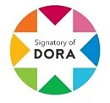
2.png)


